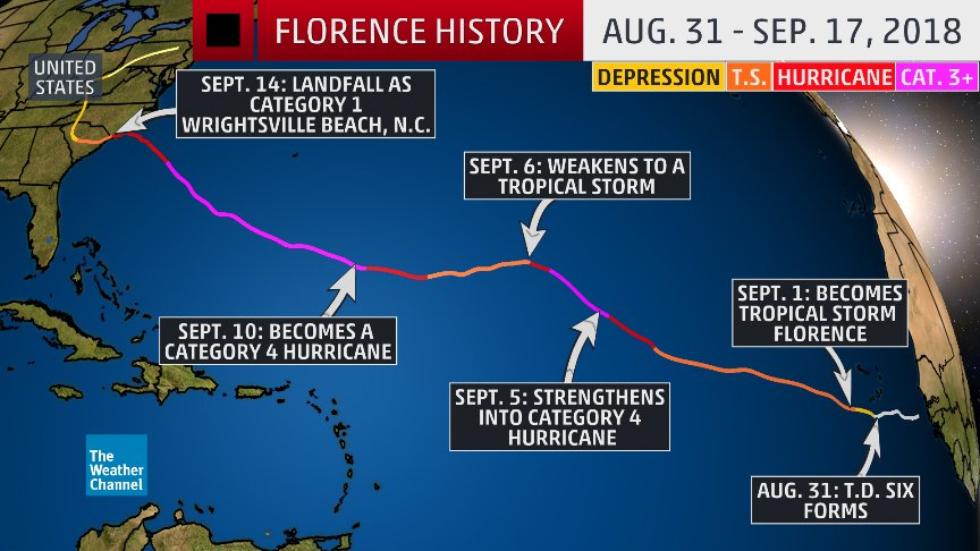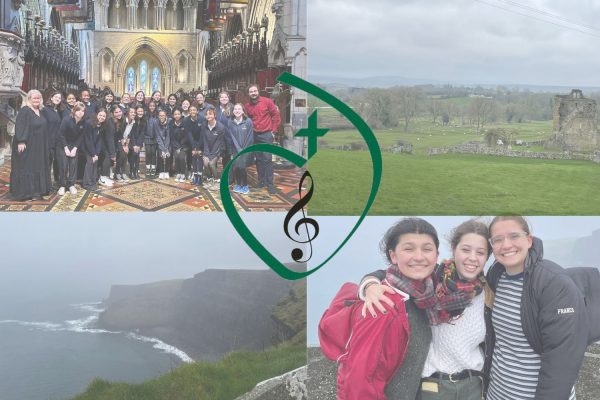Hurricane Florence leaves lasting damage on the United States east coast
Hurricane Florence made landfall Friday, September 14 near Wrightsville Beach, North Carolina at 7:15 a.m., according to CNN. The Category One hurricane posed a severe threat to North and South Carolina, nearing 95 mph winds and leaving as much as 40 inches of rain in many isolated areas.
Wilmington, North Carolina, a small port city nearly six miles west of Wrightsville Beach, is among these secluded areas. Wilmington alone received 23.02 inches of rain from Florence, making it the most rainfall of any storm since 1871, according to weather.com. The morning of September 14, wind gusts at the Wilmington International Airport reached 92 mph, greater than the wind gusts measured during Hurricane Donna in North Carolina in 1960.

Many Sacred Heart Greenwich alumnae attend college in the Carolinas and had to evacuate their respective campuses during the storm. Kaitlin Reilly ‘18 attends Elon University in Elon, North Carolina, a small town northwest of Wilmington. Kaitlin said that the school suspended normal operations beginning Thursday, September 13. However, the school advised students to leave Tuesday, September 11. According to Kaitlin, only a handful of students stayed on campus.
Although Elon took precautionary actions to accommodate the safety of their students, the school was fortunate to have minimal damage after the storm.
“We had minor flooding and some branches down, but we didn’t lose power,” Kaitlin said.
North Carolina still struggles to recuperate from the damage almost three weeks after Hurricane Florence hit. At least 49 people in North Carolina, South Carolina, and Virginia have died in storm-related incidents, according to nbcnews.com. At least 36 inches of rain fell over Elizabethtown, North Carolina, 50 miles inland of Wilmington, and 343 thousand people across North Carolina lost power for several days after the storm.

Among the 48 fatalities, at least three were infants, including a seven-month-old boy who was at home, in Wilmington, with his mother when a tree fell on their roof, according to cbsnews.com.
Uncle of junior Sydney Gallop, a Wilmington resident, Mr. Jeff Gallop worries that the news reports of accidents and injuries are not complete.
“What’s not being reported are all of the people getting hurt from cleaning up,” Mr. Gallop said.
The storm cleanup has been in effect since the day Florence hit. North and South Carolina authorities feared additional deaths after the storm passed due to rising floodwaters, according to The New York Times. Mr. Gallop is worried that, because of the use of chainsaws to clean up, people may get injured or possibly have a heart attack from lifting trees and other heavy objects. Broadcasters do not report these possible fatalities because they are “indirectly related accidents,” according to cdc.gov.
Wednesday, September 19, President Donald Trump visited the Carolinas to see the damage. During his trip, Mr. Trump took a helicopter tour of the Carolina coastline and did several walking tours with residents, according to The New York Times. Mr. Trump assured local and state officials that he and his office would help however they can.
“We’ve seen all the pictures,” said Mr. Trump, according to The New York Times. “Hurricane Florence was one of the most powerful and devastating storms to ever hit our country.”
Featured Image by Sydney Gallop ’20

Sydney is thrilled to return to the King Street Chronicle for the 2019-2020 school year as Co-Editor-in-Chief. Moving forward from her previous position...










